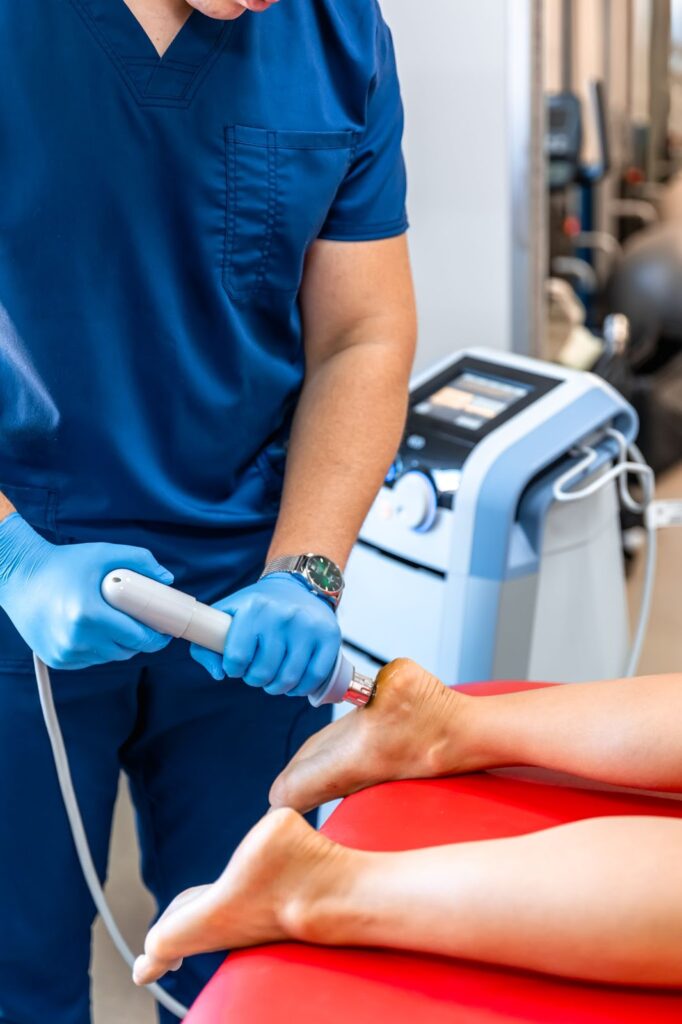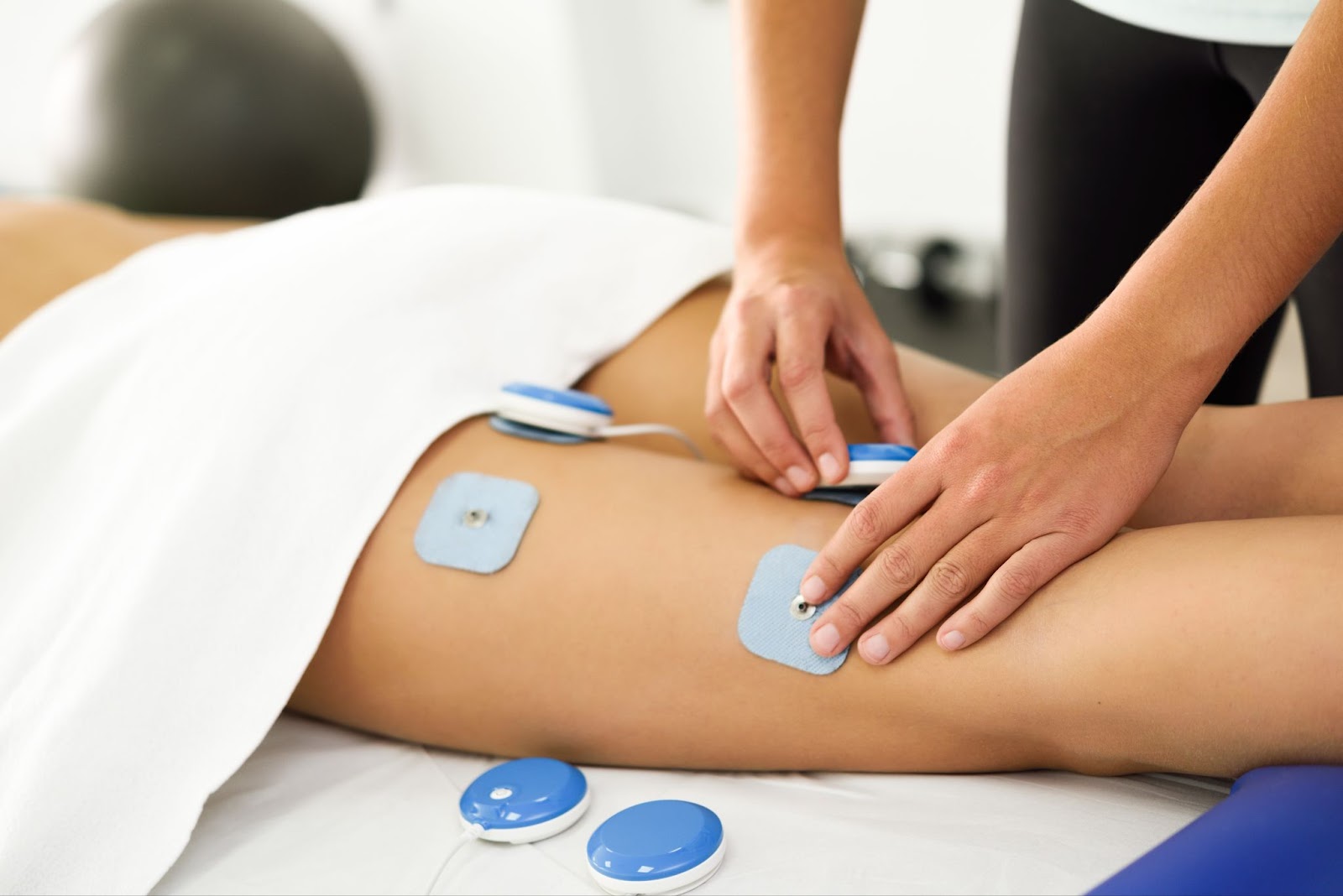Within the realm of contemporary healthcare, there is a continuous emergence of innovative therapies that challenge conventional paradigms and transform the way patients are cared for. One such pioneering approach is shockwave therapy, a non-invasive method that has garnered significant attention due to its exceptional healing properties across various medical domains. From orthopedics to sports medicine and beyond, shockwave therapy is reshaping the landscape of available treatment options for patients globally.
This piece delves into the intricacies of shockwave therapy, unraveling its origins, mechanisms of action, and the diverse array of conditions it can effectively treat. Additionally, we will explore the expanding body of research that substantiates its effectiveness, complemented by practical insights from leading medical experts who are actively utilizing this state-of-the-art technology. Join us on a captivating exploration of the realm of shockwave therapy, where scientific innovation converges to deliver transformative results for patients in search of relief and recuperation.
Deep Dive into the Impactful Healing Mechanism of Shock Wave Therapy
Shock Wave Therapy is a revolutionary technique, embodying the future of pain-relief treatments. This non-invasive approach hails from the futuristic junction of technology and medicine, providing a solution for various painful conditions and injuries. The term might seem overwhelming, however, this cutting-edge therapy is anything but threatening.
This treatment employs the power of high-energy acoustic waves, also known as radial pressure waves, to stimulate the body’s innate healing abilities. These waves are applied directly to the painful areas through a handpiece, inciting a localized response that ignites the body’s repair mechanism.
Shock Wave Therapy is remarkably effective, creating an ideal cellular healing environment that results in several benefits such as:
- Substantial pain reduction;
- Accelerated tissue repair;
- Enhanced blood flow;
- Localized inflammation reduction.
Unleashing the Power of Shock Wave Therapy for Pain Management
When it comes to managing pain, Shock Wave Therapy proves to be a game-changer. It targets specific painful areas within soft tissues – muscles, ligaments, tendons, joints, or bones, to offer direct relief.
Here’s how it works: The administered shock waves instigate micro ruptures, resulting in improved blood circulation in the affected area. This leads to localized inflammation, actively triggering the body’s healing process.
As the body naturally heals this inflammation, it produces fresh healthy cells, repairing the damaged ones simultaneously. Consequently, injured tissues start to mend, and pain associated with the state progressively decreases.
Shock Wave Therapy also lends a hand in pain relief by neutralizing trigger points, a common source of discomfort. We’ll delve deeper into this aspect in the sections below. This comprehensive piece provides an in-depth understanding of this innovative treatment, shining light onto the manifold benefits of Shock Wave Therapy.
Understanding the Mechanics of Shockwave Therapy in Healing
The emergence of Shockwave Therapy presents an innovative, non-invasive, and efficient avenue for addressing various painful ailments and injuries. While the term ‘Shockwave’ may evoke images of a high-intensity procedure, the reality contrasts significantly.
Shockwave Therapy employs high-energy acoustic waves, also known as radial pressure waves. These waves are channelled into the affected tissues, stimulating a localized response that activates the body’s healing process. The therapy provides an optimal environment for cellular healing, which:
- Diminishes Pain: Shockwave Therapy precisely targets discomfort in soft tissues like muscles, ligaments, tendons, joints, and bones. The shockwaves instigate micro ruptures, which prompt improved blood flow to the problematic area, causing localized inflammation. Consequently, the body naturally sets into motion an inflammatory repair response, producing new healthy cells and mending damaged ones. As these injured tissues repair, the associated pain starts to subside;
- Releases Trigger Points: Apart from alleviating pain, Shockwave Therapy can effectively neutralize trigger points, contributing to enhanced pain relief.
Unleashing the Power of Inflammation Resetting in Shockwave Therapy
Shockwave Therapy incites an inflammation response, prompting the body to naturally undertake the repair of the affected cells. This process stimulates chronically non-healing tissues to initiate self-repair, leading to a comprehensive healing process.
Harnessing the Collagen Production Capability of Shockwave Therapy
When cells undergo damage, the body naturally responds by producing collagen to facilitate repair. However, the body’s collagen production reduces with age. Shockwave Therapy can stimulate this collagen production process through pro collagen synthesis. Given that collagen constitutes between 1–10% of muscle tissue, it helps maintain muscle health and ensures proper functionality.
Understanding the Role of New Blood Vessels in Shockwave Therapy
Healthy blood flow is crucial for the repair and maintenance of damaged tissues. The capillary micro ruptures resulting from Shockwave Therapy encourage the growth of new blood vessels in the treated area. These new vessels provide an adequate blood supply to the area, and the increased oxygen levels expedite the healing of tissues.
Deciphering Shockwave Therapy’s Role in Calcium Build-Up Reduction
Shockwave Therapy has garnered substantial recognition for its remarkable ability to break down calcium deposits in chronic injury sites. A wide array of clinical investigations substantiate that the acoustic waves channeled through Shockwave Therapy are proficient at dissolving these stubborn calcifications or calcium build-ups.
Calcium build-up often occurs due to certain injuries or conditions, leading to pain and restricted movement. By applying acoustic waves to these calcified tissues, Shockwave Therapy disrupts the hardened calcium deposits. This disaggregation then allows the body to utilize its innate healing process to gradually remove the loosened particles, thereby fostering a healing environment and promoting mobility.
Understanding the Implication of Trigger Point Release in Shockwave Therapy
One of the fundamental highlights of Shockwave Therapy is its ability to systematically release trigger points within the muscles. These trigger points often instigate muscle pain and tension, affecting your overall wellness.
Trigger points are essentially hyper-irritable spots within the skeletal muscle that radiate pain. They’re typically manifest in tight bands of muscle fibers, leading to discomfort and reduced functional capacity. Through the efficient use of acoustic waves, Shockwave Therapy combats these pain-inducing components by unlocking the calcium pump, allowing for fluid exchange that can alleviate tension and facilitate the release of these trigger points.
By addressing these trigger points, Shockwave Therapy plays a pivotal role in pain reduction, restoring muscle function, and enhancing overall quality of life. It’s noteworthy that while the relief can be significant, a comprehensive approach involving a routine of exercises, stretches, or other complementary therapies is typically recommended for sustained results.
Diverse Therapeutic Applications of Shockwave Therapy
Shockwave Therapy exhibits exceptional results, especially in addressing chronic conditions involving tendons and muscles, those persisting for extended periods. However, ascertaining its suitability for an individual necessitates a comprehensive diagnosis of their condition.
Shockwave Therapy demonstrates a broad spectrum of therapeutic applications. Let’s delve into some conditions where it proves beneficial:
- Plantar Fasciitis: This common form of heel pain often results from inflammation of the plantar fascia, a tissue connecting the heel bone to the toes. Shockwave Therapy aids in stimulating the body’s natural healing response, reducing inflammation and pain;
- Shin Splints: Characterised by pain along the shin bone, this condition is frequent in athletes. Shockwave Therapy aids in stimulating blood flow in the region, reducing pain and accelerating recovery;
- Achilles Tendinopathy: This condition involves the inflammation of the Achilles tendon, often causing pain and difficulty in walking. Shockwave Therapy can help reduce inflammation and stimulate healing;
- Other Tendinopathies: Tendinopathies, disorders involving the tendons, can significantly benefit from Shockwave Therapy. It can stimulate collagen production and blood flow, thus enhancing the healing process;
- Iliotibial Band Syndrome: This condition, often present in runners, causes pain on the outer knee. Shockwave Therapy can help by stimulating blood flow and healing in the area;
- Chronic Bursitis: Long-standing inflammation of the bursa, a fluid-filled sac that reduces friction in joints, can be effectively addressed by Shockwave Therapy;
- Trigger Point Therapy: Shockwave Therapy excels at releasing trigger points, spots in the muscles that cause pain. The therapy uses acoustic waves to release these points, subsequently alleviating discomfort.
For comprehensive healing and prevention, the holistic application of Shockwave Therapy with other treatment options could be pivotal. It can be complemented with orthotic therapy, exercise prescriptions, mobilization techniques, dry needling, foot mobilisation therapy, and gait re-training, among others. This integrated therapeutic approach ensures complete recovery and a successful return to regular activity.
The Anatomy of a Shockwave Therapy Session
Before commencing with Shockwave Therapy, a preliminary appointment is paramount to evaluate the specifics of the problem, determining if Shockwave Therapy constitutes an effective treatment route. If found suitable, therapy can be initiated during the initial consultation session. To ensure the absolute safety of the procedure, experts employ diagnostic ultrasounds to check for any potential impediments.
While designing the treatment plan, several factors play a vital role in influencing the approach. These factors mainly include the individual’s personal goals and their expected timeline for recovery.
During subsequent Shockwave Therapy sessions, a similar routine is adhered to, starting with a discussion of the individual’s current progress and any other treatment modalities being employed alongside, such as dry needling or exercise rehabilitation prescription.
Following these pre-therapy steps, the actual administration of Shockwave Therapy ensues.
Unraveling the Steps of Shockwave Therapy Delivery
Step 1
With paramount importance accorded to accuracy in therapy administration, the team starts with locating the precise treatment area. This is achieved through a process known as palpation, a meticulous physical examination conducted with the hands, pinpointing the exact area in need of therapy.

This precision-oriented approach ensures the therapy’s effectiveness, delivering the acoustic waves exactly where they are required. Thus, Shockwave Therapy continues to serve as a remarkable pain-relieving modality, tailoring the treatment to the individual’s specific needs and conditions.
Step 2
Ensuring optimal delivery of the acoustic waves, an ample quantity of ultrasound gel is applied meticulously to the target area. This gel functions as a conductive medium, facilitating the seamless transfer of the acoustic waves, which boosts the efficacy of the treatment.
Step 3
With the gel in position, the practitioner then places the probe head of the Shockwave Therapy device onto the treatment area, applying gentle pressure. Subsequently, the therapy begins with the click of a button.
Navigating through the realm of Shockwave Therapy can bring about a unique sensory experience. The sensation may initially feel unfamiliar and cause slight discomfort, but as the session progresses, patients typically notice a reduction in discomfort. Each treatment typically spans around 10 to 20 minutes, a minimal commitment that has showcased immense potential in providing lasting pain relief and promoting healing.
Post-Therapy Session
Following the session, it’s not unusual to experience some residual soreness in the treated area. Consider it akin to a good workout – it might make the muscles a bit tender, but it’s a sign that the therapy is working. Varying from person to person and the condition under treatment, the soreness can last between a few hours to a couple of days. But worry not, this transient discomfort typically subsides soon, paving the way for the healing changes initiated by the shockwave treatment.
It’s paramount to communicate with your practitioner throughout your treatment journey. Always relay any changes or concerns you may have, to ensure you’re receiving the best possible care. Patients are encouraged to discuss their personal wellness goals, response to therapy, and any other issues to ensure optimal therapeutic outcomes. Also, explore effective solutions to alleviate ankle pain and regain mobility. Discover expert tips and exercises for lasting relief.
Demystifying Pain Perception in Shockwave Therapy
Though the term ‘shockwave’ may sound rather daunting, the therapy itself is innocuous, with minimal discomfort. Most patients perceive the sensation of Shockwave Therapy as a light tap on the skin that might feel moderately uncomfortable but is not severe or intolerable. This feeling could be comparatively likened to pressing on a bruised area.
Following the therapy, minor tenderness or bruised sensation is a typical response. However, this is transient and tends to dissipate within a day or two. Interestingly, many patients report experiencing pain relief within just a few hours post-treatment, validating the swift action of the therapy.
The goal of successive Shockwave Therapy sessions is to increment the dosage of acoustic energy waves while maintaining comfort levels. Consequently, as the healing process advances, the body acclimates to higher energy waves, keeping discomfort levels stable across the course of treatment. It’s essential to remember that these sensations are indicative of the therapy’s effectiveness and the body’s response to healing.
As with any treatment, the patient’s comfort is of utmost priority. Open communication between the patient and the practitioner can provide a better understanding of the patient’s comfort threshold and enable adjustments in the therapy protocol to make the experience as comfortable as possible.
The benefits of Shockwave Therapy far outweigh any temporary discomfort, with countless patients reporting significant improvement in their condition. The key is to stay focused on the long-term benefits of reduced pain, enhanced mobility, and improved quality of life.
Mapping the Recovery Progress with Shockwave Therapy
The number of required Shockwave Therapy sessions primarily hinges on the severity and chronicity of the condition. The individual’s healing response also plays a key role in determining this. However, a general guideline dictates a course of 3 to 4 sessions, administered on a weekly basis. This regimen aligns with the average soft tissue regeneration and recovery cycle spanning four weeks.
Post-treatment, patients generally begin noticing improvements either immediately or within a few hours to days. This speed and the progressive reduction of pain affirm the therapy’s swift action, triggering the body’s healing mechanisms immediately following the initial treatment.
Throughout the therapy course, patients are typically observed to experience a gradual decline in pain and symptoms with each passing week. However, the improvement trajectory could vary based on individual health conditions, lifestyle factors, and individual commitment towards advised treatment protocols.
Understanding the Possibility of Side Effects
While side effects are sporadic and unusual in Shockwave Therapy, minor discomfort around the treated area or slight bruising could occur in rare instances. However, such occurrences are infrequent and mild, resolving quickly on their own.
Patients are advised to contact their healthcare provider if they experience any unexpected discomfort or side effects. Practitioners always prioritize their patients’ welfare and comfort, ready to make necessary adjustments in the therapy, ensuring a safe and comfortable treatment experience.
All in all, the benefits derived from Shockwave Therapy significantly overshadow these minor and rare side effects. Hence, it is deemed as a safe and effective treatment option for various painful conditions.
Conclusion
In conclusion, shockwave therapy stands as a testament to the constant evolution and advancement within modern medicine. Its non-invasive nature, coupled with remarkable healing properties, has not only challenged traditional treatment paradigms but has also opened new doors for patients across various medical disciplines. As we continue to witness ongoing research and practical applications of this innovative technology, it becomes evident that shockwave therapy is poised to play a pivotal role in delivering transformative outcomes for individuals seeking effective relief and recovery.


